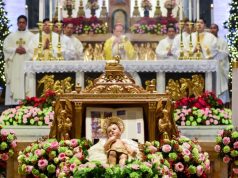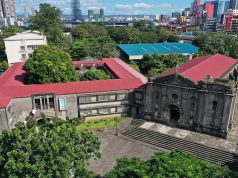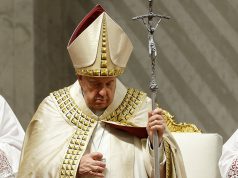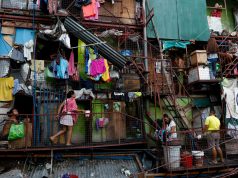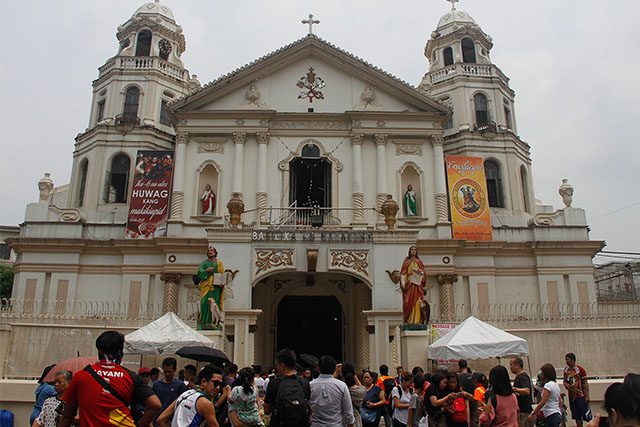
A Twitter post calling out the dress code of a Catholic church as “anti-poor” sparked arguments on whether the guidelines serve to facilitate respect or discriminate against the less fortunate.
A Twitter user shared a picture of a tarpaulin found outside a church which featured guidelines of what worshippers may and may not wear while attending eucharistic celebrations.
Although it did not specifically indicate that particular types of attire are forbidden, it discouraged male churchgoers from wearing “slippers, tattered or ripped jeans, cap, earrings, jersey and sando.”
Female churchgoers, meanwhile, are discouraged from wearing “tattered or ripped jeans, slippers, leggings, shorts, short skirt, low necklines, backless, see-through or sleeveless tops, spaghetti straps and tubes.”
but this is anti-poor??? why is the church anti-poor??? pic.twitter.com/IIqnhjfNor
— Vince 🌈 (@vinceliban) December 31, 2019
“Not allowing poor people who cannot afford to have ‘proper attire?’ Not allowing transgender people who want to go to church just coz they’re ‘cross-dressing?’ They call it ‘religious freedom.’ I CALL IT DISCRIMINATION,” he wrote in a follow-up tweet.
The user added that his brother entered the church with shorts and slippers, claiming that the latter “gave zero fvks” about the guidelines.
RELATED: Caloocan mayor addresses buzz over ordinance that restricts clothing
“Anti-poor siya in some sense at anti-masses in general. Wala namang nakasaad sa Bibliya na bawal (ang) ganito o ganyang kemerut. Ilang beses na din naman akong naka-shorts pagpunta sa simbahan, hindi naman nagalit si Jesus,” one user wrote.
There were other users who argued that the post appeared to imply that the less unfortunate ones cannot afford “modest” clothing as seen on the tarpaulin.
“Eh sa sinasabi mong ‘yan parang minamaliit mo ang mga mahihirap na ‘di nakakapag-suot ng disente. Hakhak,” wrote a Twitter user.
“Funny. So porke naka-tanktop, ripped jeans, shorts and the like, mahirap na agad? Why is he implying that only the poor wear these and that the poor are incapable of dressing accordingly?” said a Reddit user who also saw the post.
Other Filipinos pointed out that there are decent attires which are not expensive in the first place.
“How is this anti-poor though? There are cheap and affordable ways to dress properly. And these are merely guidelines for those who can afford,” said another Twitter user.
Another user who describes herself as “non-religious” questioned the post and said that if one has a “huge amount of respect for the church,” having a dress code wouldn’t be a problem.
“Be mindful that we all have different ideologies. Let’s respect one another regardless if this is subjective,” she added.
Her sentiments were echoed by a different user who said that one “should study cultural relativism and the idea of conservatism on different religions” before making it an issue.
Another pointed out that if people can afford to “abide by dress codes” of other functions such as weddings and graduations, there should be no problem following the church’s.
Church can never be anti-poor. What a concept! Lol.
Ang point here is you have to dress properly when inside. We all have to abide by dress codes sa iba’t-ibang functions in society, why cant we do it in Church? https://t.co/IuHgNGynST
— Bonanafana Fonikki (@macronikki) January 1, 2020
The church is not the only entity that enforces dress code guidelines. Government offices such as the Land Transportation Office and the Bureau of Immigration require clients to be in decent attire whenever they perform transactions in the agency.
No distractions
The dress code guidelines of the church were implemented by the Archdiocese of Manila in 2007 after receiving “numerous complaints about skimpy attire” from parishioners themselves.
The archdiocese eventually issued posters on what they deem as proper forms of clothing in parishes and shrines to make people aware of the concern.
“This is to remind people that it would be good to come in appropriate clothing because other people are scandalized,” Peachy Yamsuan of the Manila archdiocese said before.
“It is for the other worshippers who are distracted. You come to the church to pray and if your eyes wander and you see inappropriate clothes, well, it does not add to your spiritual goals,” she added.
Davao Archbishop Fernando Capalla previously explained that the dress code is a sign of observing propriety in places of worship where solemn celebrations like eucharistic masses, the highest form of prayer, are observed as a community.
Father Jerome Secillano, the executive secretary of CBCP’s permanent committee on public affairs, also said that wearing the appropriate attire in church denotes an “expression of respect” to a holy place and to God himself.




